By: Scott
Fratcher - Marine Engineer/Captain
A lazar temp is a wonderful tool. Point the pistol like device
at just about anything and it shows a digital real time temperature
readout. This relatively inexpensive tool should be included in
every yacht’s tool kit. The uses are seemingly endless.
Here are just a few tricks that can be performed with a laser
temperature gauge.
Diesel Engines
Check each cylinder temp while the engine is under load. They
should all be equal. A cold cylinder means it’s not functioning,
(IE the injector is not passing fuel into the cylinder) and a
hot cylinder means it’s running too hard (IE it’s
doing all the work cause another cylinder is not working).—Shoot
the whole head and look for hot spots. Hot spots show where a
head gasket is leaking, or a clogged coolant passage. If you have
to use an engine with a hot spot draw temperature “topo”
lines around the hot spot at a known load. Keep checking the hot
spot “topo” lines. If they grow then the failure is
progressing. Slow down to preserve what is left of the engine-Check
the heat exchangers water in and out. Is it carrying off the heat?
Under 80% load the raw water IN should be about eight degrees
C cooler than the raw water OUT. The fresh water side of the cooling
circuit should have about a ten degree drop—check the oil
cooler and gearbox cooler the same way
If an engine is overheating you should be able to make a clear
determination if the engine is producing too much heat (IE.-bad
head gasket) or the cooling system is not removing enough heat
(IE clogged heat exchanger). See this month “Yachtwork”
question.
Check oil temp at the engine oil pan. Oil tends to be about five
to ten degrees warmer than the coolant and 95C is about max.—Follow
the whole cooling system path (shown in manual) with the gauge
running. Can you follow heat flow from the engine heat production
through the coolers and out the raw water into the exhaust?—check
exhaust gas temp. This is one of the most important readouts on
the whole engine system. All cylinders should be about the same.
One cylinder running hot can indicate a faulty injector or a cylinder
about to seize- If you are trouble shooting a piece of equipment
that may go “catastrophic” (throw dangerous metal
pieces out the side) then the lazar temp allows temperature samples
to be take from a safe distance— Check for hot spots in
gearboxes—look in the manual to see what is under the hot
spot. Bearing going bad? Clutch pack beginning to slip? Without
a turbo the exhaust temp should be under 500 (max) under full
load, with a turbo it should be under 800 (max pre turbo), check
the manual, the cooler the exhaust gas temperature the better
your engine efficiency—The manual flax packing gland at
the prop shaft should be no more than 60C
Galley
Make points with the cook by calibrating the galley oven and
locating it’s hot spots— Save energy on the refrigeration
by checking the temperature difference around refrigerator doors
and sides for big losses showing wasted energy. Once found simply
re-insulate or calk the small “cold leaks”-Trace the
refrigeration system from the cooling pump, through heat exchangers,
to the cold box and back to the pump. You don’t even have
to know what the components do, just where the temperature transfer
stops to make a basic diagnosis-Shoot the inside of the deepfreeze.
Is the -60 really that cold? Where is the coldest beer in the
fridge located? Check the HVAC cooling air for temperature at
the outlet. This gives a baseline that can be checked again over
time. Any change tells us the system is clogging or it’s
time for service.
Electrical Systems
Check an alternator under full load. The case temp should not
be over 100C, but the diode pack may be 150C. Much more and you
know the alternator will overheat if used under continuous duty—Shoot
electrical lugs for hot spots without having to touch live electrical
leads. This way only problem lugs have to be improved—Check
generators under full load for over heated windings—shoot
breakers while fully loaded for heat—check electric motors
on windlasses and pumps for overheating against the motor spec
sheet—Look for one side of the motor heating up faster than
the other, this indicates a failing windings—get a temperature
of the finals of a SSB under full load then clean the antenna
leads and check again. If the temp dropped you made progress.
Tip- When buying a lazar temp check the high and low temperature
range. A range of a 600C should give you all the information you
need. Some now read up to 1000C and this is even better. A reading
of only 250C is not enough to effectively check exhaust gas temperatures
but will diagnose overheating engines.
Tip: The better quality laser temps shoot a smaller diameter circle
at a given distance. It’s worth paying the extra money to
be able to shoot a smaller circle at a meter. The difference is
the ability to isolate a hot spot to the exact location.
How to use a laser temp to troubleshoot an overheating engine
Q. Yachtwork-My diesel yacht engine overheats when I give full
throttle. If I drive along slow all seems well. I have changed
the impeller and cleaned the sea strainer but when I try to drive
hard the engine temperature rises. How do I fix this problem?
A. Good job on starting your repair with two of the most common
reasons marine engines overheat, worn out impellers and clogged
sea strainers. Now it’s time to put on our “Marine
Engineer” hats and begin some real trouble shooting. The
purpose of this trouble shooting is to find the exact cause of
the overheating engine by performing some simple tests. This way
we locate and fix the problem without changing extra parts.
It should be noted even if your engine is in perfect condition
you can run this same series of tests noting the results in your
log. At any time in the future if your engine were to begin to
overheat simply compare the old number to the new to find the
source of the problem.
To perform these tests we are going to use a laser temperature
gauge to check if each component in the cooling circuit is performing
to standard. Before we begin we must first ensure the salt water
pump is moving enough water. With the engine in neutral run the
engine at 80% of it’s maximum RPM’s. You might set
typical 3600 RPM yacht engine at 3000 rpm’s. Take a bucket
to the exhaust outlet and time how long it takes to fill with
exhaust cooling water. Use this measurement to figure how many
liters per minute the cooling system is passing. Compare this
number with your manual.
If you don’t have a manual you might be in the ballpark
if your 12 hp engine is pumping about 15 liters per minute and
a 50 hp engine might move something like 30 liters per minute.
If your engine has flow restriction you can locate this by breaking
the salt water loop in various sections of the rout and doing
a quick flow check till you find the clog. Remember the exhaust
side of the loop may want to blow back so put a plug in the downstream
side of the break and only run the engine for a few seconds jut
to check flow rate.
Now the real testing can begin. We want to know if the engine
is overheating because it is producing too much heat (IE-bad head
gasket) or if a cooling component has failed (IE-clogged fresh
water heat exchanger).
We need to run the engine hard. Small yachts might be able to
stay tied to the dock while boats with more horse power should
do this test in open water. Either way we need to test the diesel
under load.
For small yacht be sure you boat is well tied to a strong dock
and pilings. Double your stern lines if necessary because were
going to pull against them while trying to make the engine overheat.
Put the engine in gear and slowly increase the rpm’s till
your at about 80% load. Check all your dock lines, cleats, and
chafe points one more time. If everything looks secure take your
laser temp and head to the engine room.
Wait till the engine begins to overheat and test. Start at the
sea water inlet and follow the salt water through the cooling
circuit testing and noting temperature as you go.
The salt water will probably pass the sea strainer, and on to
the gearbox heat exchanger. You can expect a one degree rise in
sea water temperature. A larger temperature rise indicates the
gearbox is producing too much heat. (IE-slipping clutch), the
seawater should pass through the salt water pump and on to the
main engine heat exchanger. Expect about a five degree rise in
sea water temperature as the salt water passes through the exchanger
. More indicates the engine is producing too much heat.
At this time also check the fresh water in and out at the heat
exchanger. The temperature change should be about ten to fifteen
degrees between the cooling water leaving the engine and the cooled
water returning to the engine. If the water re-entering the engine
is still hot the problem is in the heat exchanger. (IE-clogged
with heat insulating gunk), but if the water re-entering the engine
has been properly cooled the problem is in the engine (IE-no cooling
water flow, or blown head gasket).
Continue this test till the salt water leaves the boat. You might
come across a couple more heat exchangers like maybe a hydraulic
system cooler or HVAC or refrigeration system. Test them the same
way. A one degree rise in sea water temperature should be about
maximum for any of these additional cooling systems.
If you found the engine is producing too much heat continue testing
with the laser temperature gauge. Begin at the head and look for
hot spots. Follow the cooling water circuit looking for the sudden
increase in temperature. Check the oil temperature and oil heat
exchanger the same way looking for oil heating due to thinning
(IE-fuel pump with leaking seals bleeding diesel into the liberating
oil thus diluting it).
With this series of tests and a little reasoning you should find
the problem and only have to fix that single item. This will save
time and expense in the long run.
Laser temp gauge and overheating alternator
Q. Yachtwork-I read your dual alternator article and noticed
you mention reverse mounting an alternator. I have this exact
system on my yacht, but after fifteen minutes of running the Balmar
temperature sensor reduces the alternator output as it got too
hot. Why is this?
Answer-The problem is probably because the original cooling fan
was left on the alternator when it was reversed. Cooing fans are
made to turn left, right or unidirectional. You can tell one from
another because the cooling blades should be angled back away
from the direction of rotation. Change the angled cooling fan
to one with straight blades and the alternator should run cool
again
Suggestions
Any ideas to help others with a laser temp or any of our other
articles? Send me an email and I'll be glad to add it here.
Landlubber
I use the laser temp in boat building, keep an eye on resin temps
as they are being used (mixed resins that is), and also for hull
temps prior to set off of the resin. Very handy instrument.
Author profile-Scott Fratcher has served as Senior Technician
for Yanmar Engineering Services in Auckland where he used many
of the tricks shown in this article. More information is available
Yachtwork.com, or see “How
To Make Money With Boats”
|
The
incredibly useful laser temperature gauge
.JPG)
.JPG)
.JPG)
.JPG)
.JPG)
.JPG)
.JPG)
.JPG)
.JPG)
.JPG)
.JPG)
.JPG)
.JPG)
.JPG)
.JPG)
.JPG)
.JPG)
Basic Fast Flow Emergency Bilge Pump Kit
$599USD plus shipping
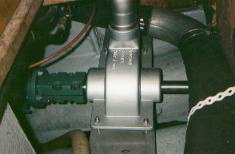
Fast flow pump installed.
Always ready - Alwasy pumping

Pump arrives in parts for easy install. No need
to remove the prop shaft
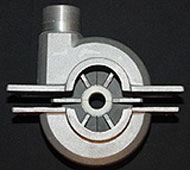
Prop shaft bilge pump installed and ready for
use
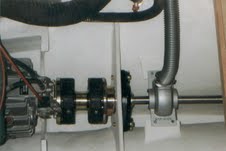
Impeller blades split in two for easy install
and come in various sized to meet every boat's needs

Pump is ready for installation.
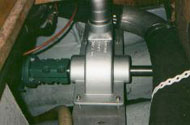
This is a safe boat with the Fast Flow propeller
driven bilge pump
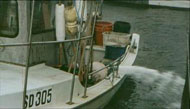
Example of a propeller driven Fast Flow bilge
pump in operation
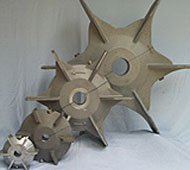
Fast Flow emergency bilge pump in position ready
to save the day
Basic Fast Flow Emergency Bilge Pump Kit
$599USD plus shipping
Order your books by Scott Fratcher here
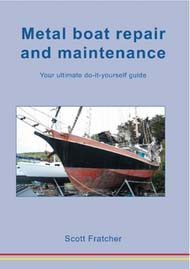
Metal boat repair and maintenance. A must read for any steel boat
owner.
Print:
$31.10
Download:
$12.00
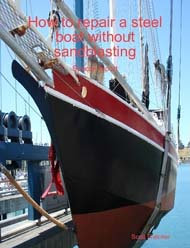
How to repair a steel boat without sandblasting. Special report.
Download:
$4.00

In order to get a good job as a marine engineer we need a marine
engineer licence, commonly called a Certificate of Competency
Print:
$39.49
Download:
$29.50
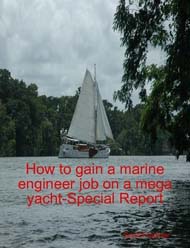
How to get a job on a mega yacht as a marine engineer? It can
be done without a licence.
Download:
$4.00
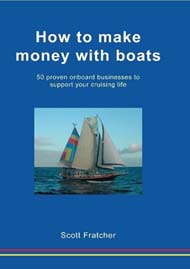
50 money making ideas run from a boat
Print:
$39.90
Download:
$39.90
Make money with boats? You bet! It's done every
day, but most people won't tell us how they did it. This book
is a tell all to give the layman the tools needed to start their
own onboard cruising business.
How to make money with boats has become an instant
classic selling around the world making dreams come true. If your
planning a cruise, or your know somone who is this is the perfect
book.
Print:
$39.90
Download:
$39.90

Print:
$21.37
Download:
$9.00
How to buy boats cheap? Dozens of tricks used
by adventurers around the world every day. This book is a must
read for anybody ready to purchase a boat.

Print:
$29.96
Download:
$9.00
The race was a heartbreaker, but eventually Earthrace took the
round the world speedboat record. This book is the log and blog
of the 2007 race where Earthrace set dozens of fastest ocean record
crossings.

Download:
$12.00
Earthrace in color. The same book as above, but in vivid color
to bring all the race moments right to the reader.
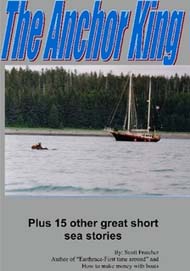
Print:
$14.97
Download:
$9.00
Anchor King is a narrative book of short stories of the Sausalito
California waterfront in the late 1980's. Anchor King contains
the award winning short story "Sex Toys?"
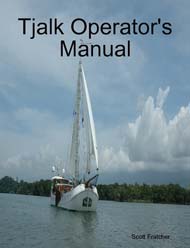
Print:
$115.47
Download:
$5.00
Tjalk Operator's Manual is an example of how
to build a yacht manual. Over 300 pages showing how to drive a
twin engine, single rudder vessel and much more.

|

